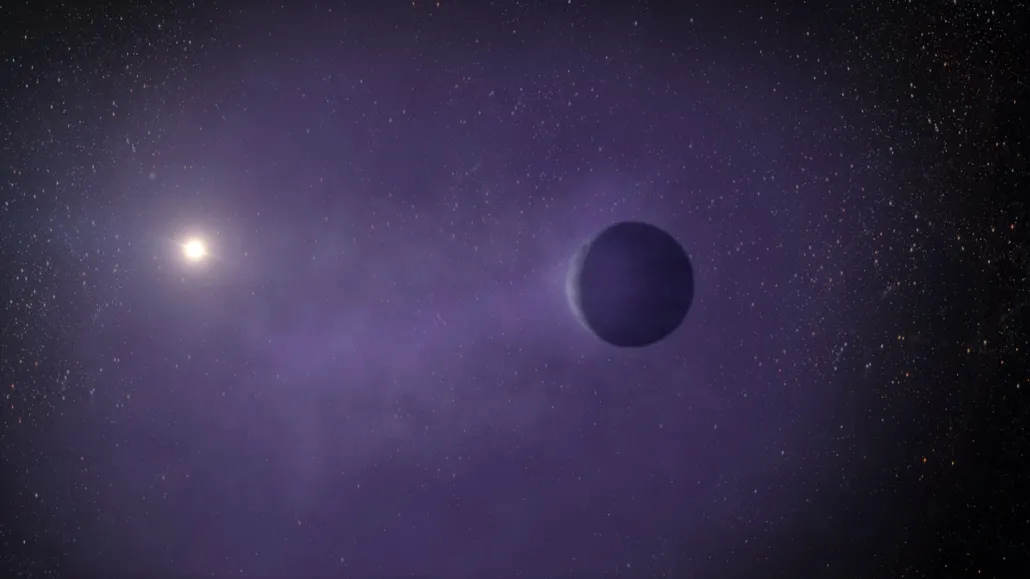
Starlight can erode the atmospheres of some mini-Neptune exoplanets (one illustrated), gradually turning them into super-Earths, rocky worlds a bit bigger than our own.
Adam Makarenko/Keck Observatory
Mini-Neptunes and super-Earths may have a lot more in common than just being superlatives.
Four gaseous exoplanets, each a bit smaller than Neptune, seem to be evolving into super-Earths, rocky worlds up to 1.5 times the width of our home planet. That’s because the intense radiation of their stars appears to be pushing away the planets’ thick atmospheres, researchers report in a paper submitted July 26 at arXiv.org. If the current rate of atmospheric loss keeps up, the team predicts, those puffy atmospheres will eventually vanish, leaving behind smaller planets of bare rock.
Studying how these worlds evolve and lose their atmospheres can help scientists understand how other exoplanets lose their atmospheres. And that, says astronomer Heather Knutson of Caltech, can provide intel on what types of planets might have habitable environments. “Because if you can’t keep an atmosphere,” she says, “you can’t be habitable.”
Knutson and her colleagues’ new study bolsters a previous suspicion. Earlier this year, the same researchers reported that helium seemed to be escaping the atmosphere of one these mini-Neptunes. But the team wasn’t sure if their discovery was a one-off. “Maybe we just got very lucky for this one planet, but every other planet is different,” says exoplanet researcher Michael Zhang, also of Caltech.
So the team looked at three more mini-Neptunes orbiting other stars and compared those worlds to the first planet they had observed. Each of these planets occasionally blocks some of the light from its star (SN: 7/21/21). Zhang, Knutson and colleagues tracked how long each planet blocked its stars’ light and how much of that starlight was absorbed by helium enveloping the planets. Together, these observations let the team measure the sizes and shapes of the planets’ atmospheres.
“When a planet is losing its atmosphere, you get this big, sort of cometlike tail of gas coming out from the planet,” Knutson says. If the gas instead is still bound to the planet — as is the case for Neptune in our solar system — the astronomers would have seen a circle. “We don’t fully understand all the shapes that we see in the outflows,” she says, “but we see they’re not spherical.”
In other words, each planet is steadily losing its helium. “I never would have guessed that every single planet we looked at, that we would see such a clear detection,” Knutson says.
The astronomers also calculated how much mass those exoplanets were losing (SN: 6/19/17). “This mass loss rate is high enough to strip the atmospheres of at least most of these planets, so that some of them, at least, will become super-Earths,” Zhang says.
These rates, though, are just snapshots in time, says Ian Crossfield, an exoplanet researcher at the University of Kansas in Lawrence who was not involved with this work. For each planet, “you don’t know exactly how it’s been losing atmosphere throughout its entire history and into the future,” he says. “All we know is what we see today.” Even with such open questions, he adds, the idea that mini-Neptunes turn into super-Earths “seems plausible.”
Theories and computer simulations of how planets form and lose their atmospheres can help fill in some of the blanks on individual planets, Crossfield says.
Measurements of more mini-Neptunes will also help. Zhang plans to observe another handful. In addition, “we’ve already looked at one more target, and that target also has a pretty strong escaping helium [signal],” he says. “Now we have five for five.”







